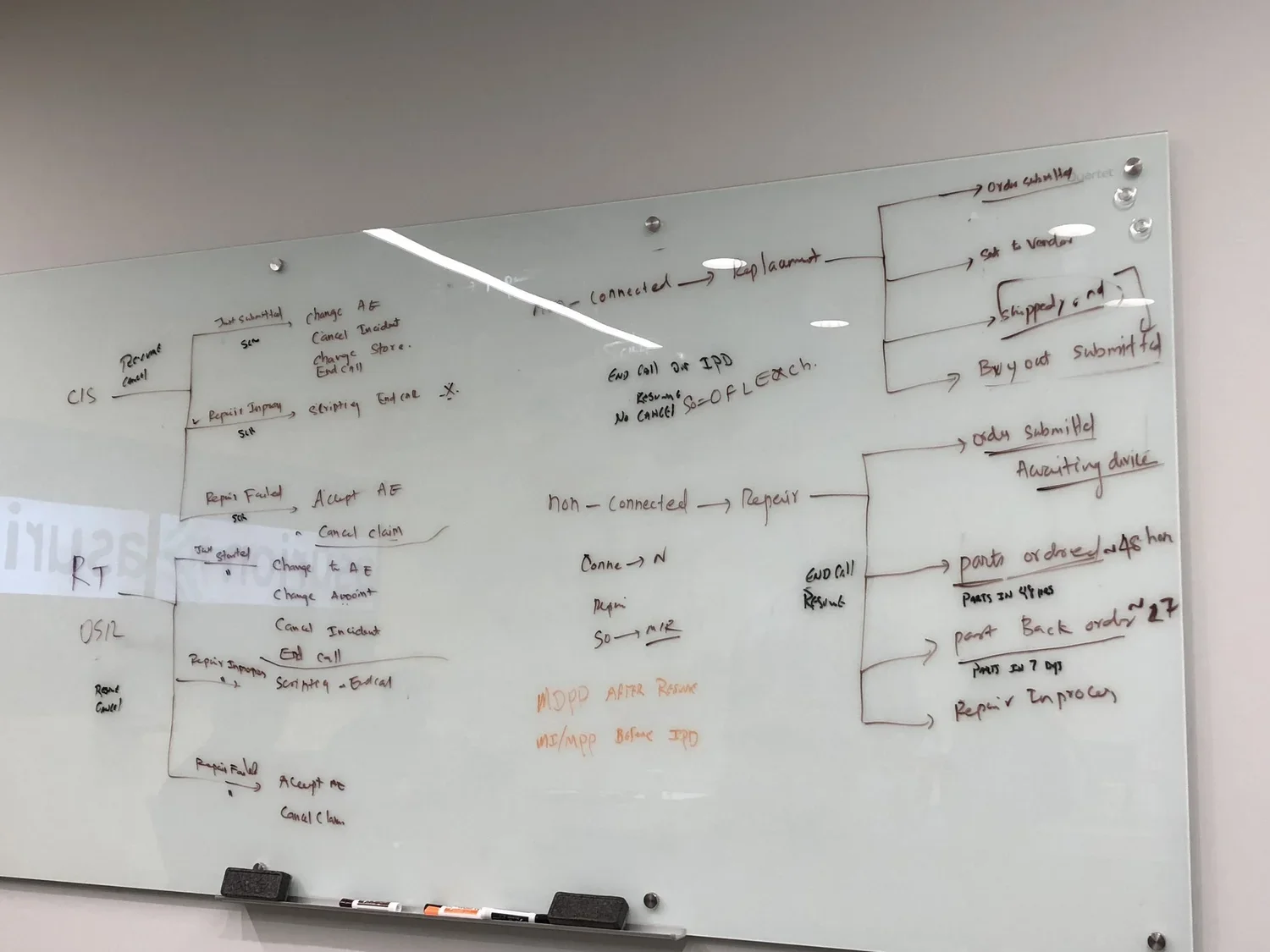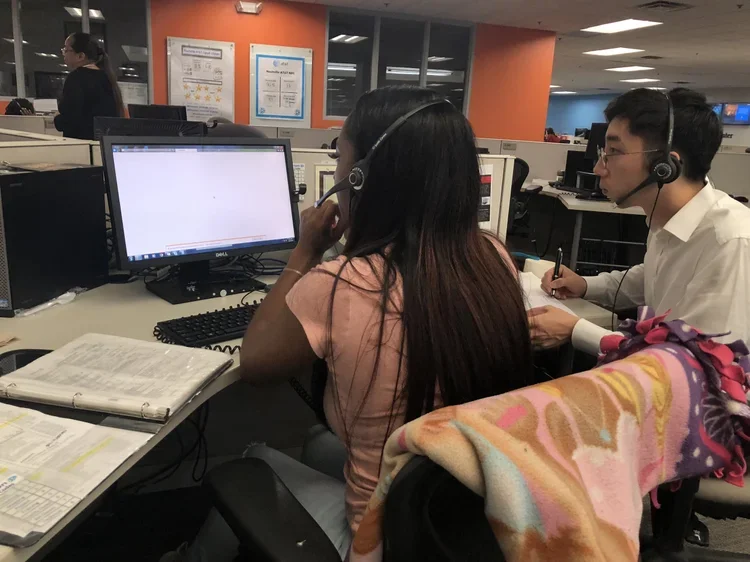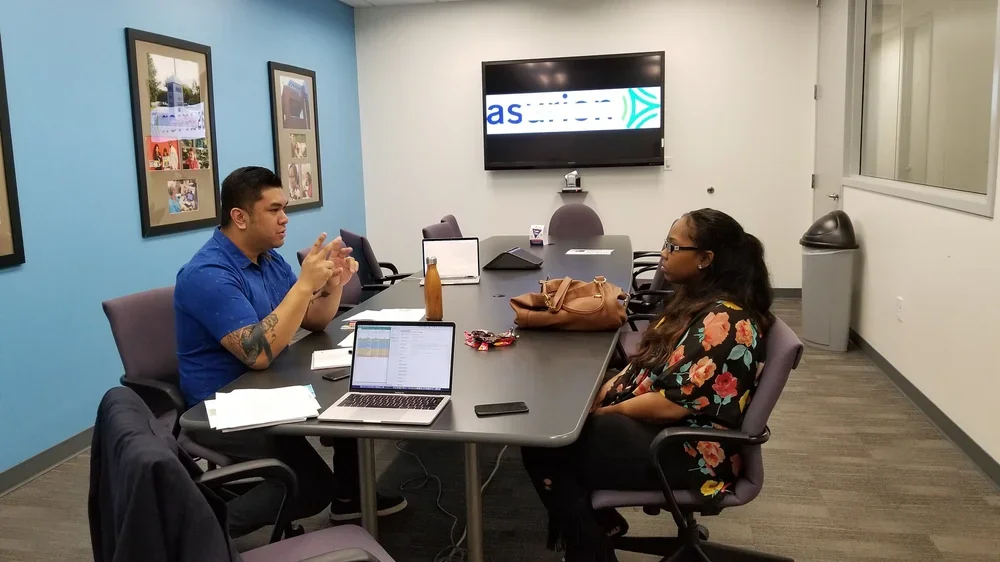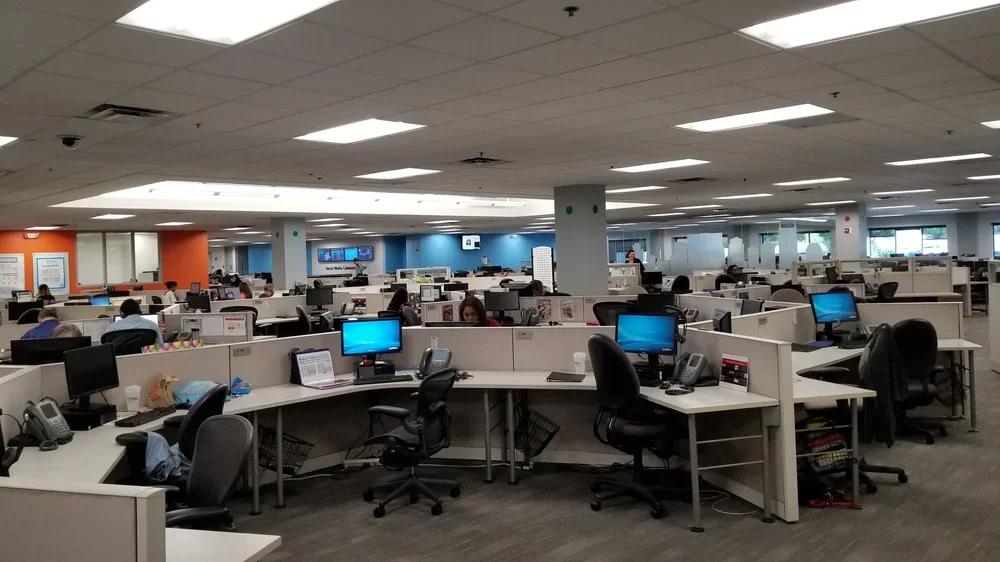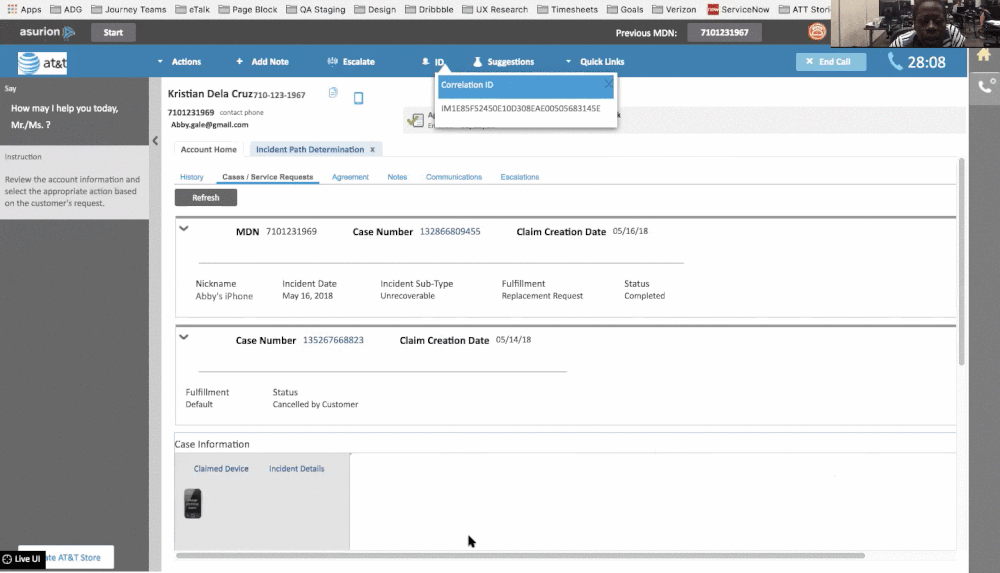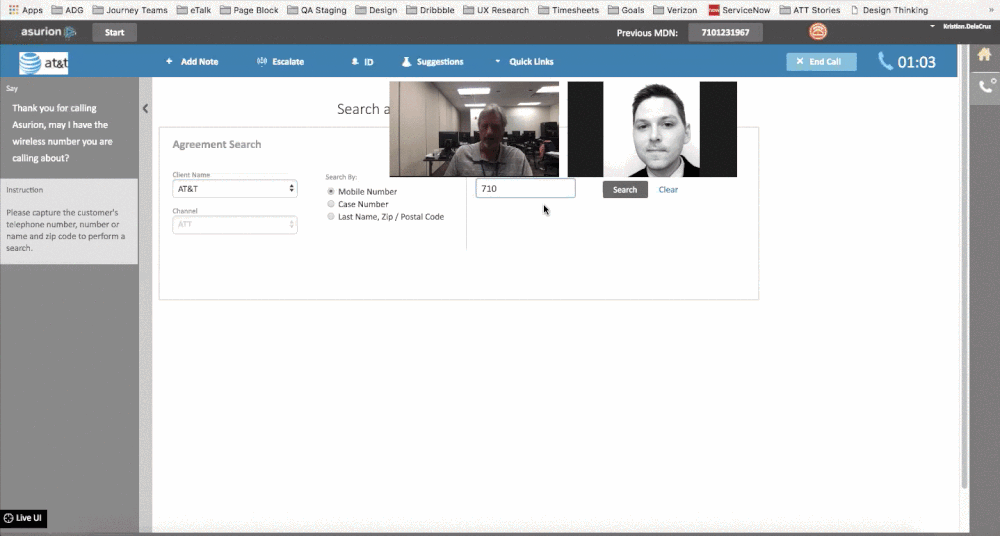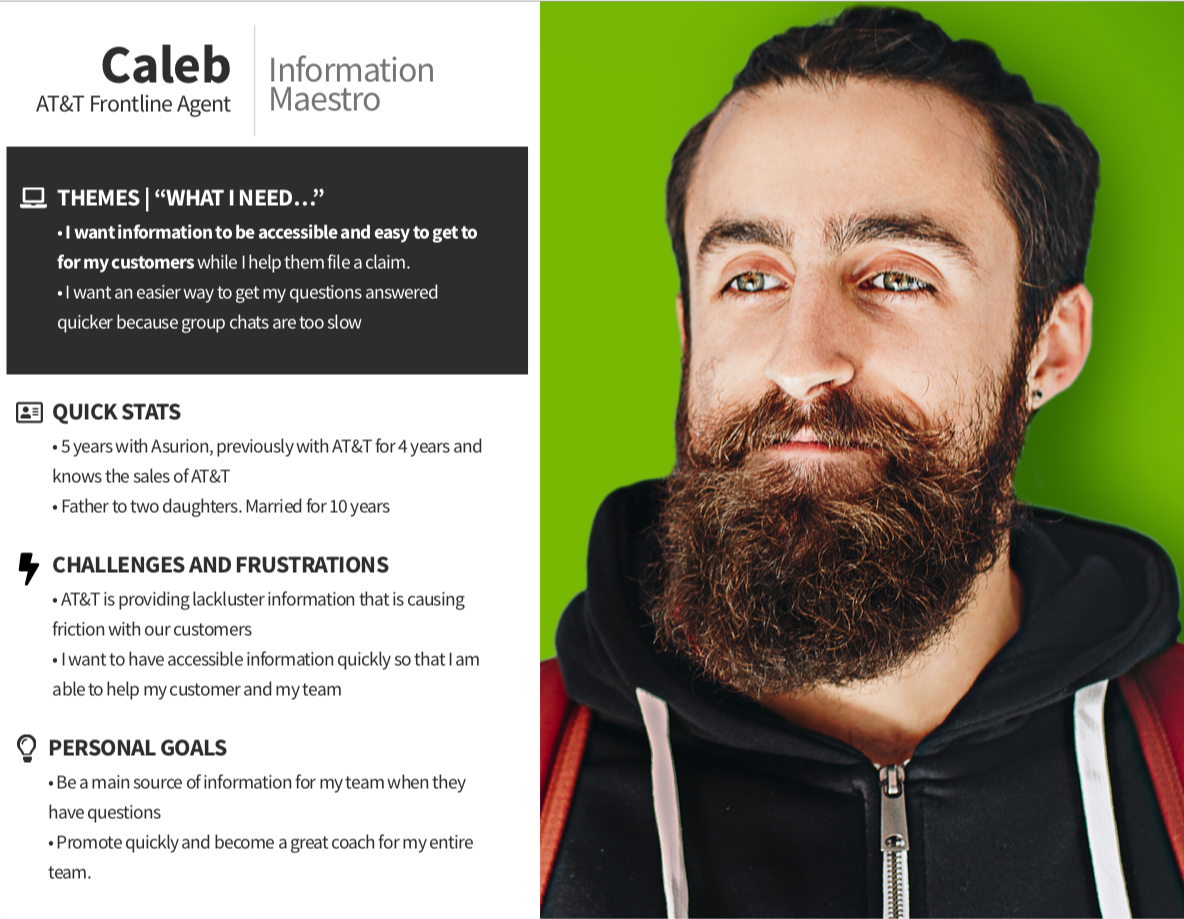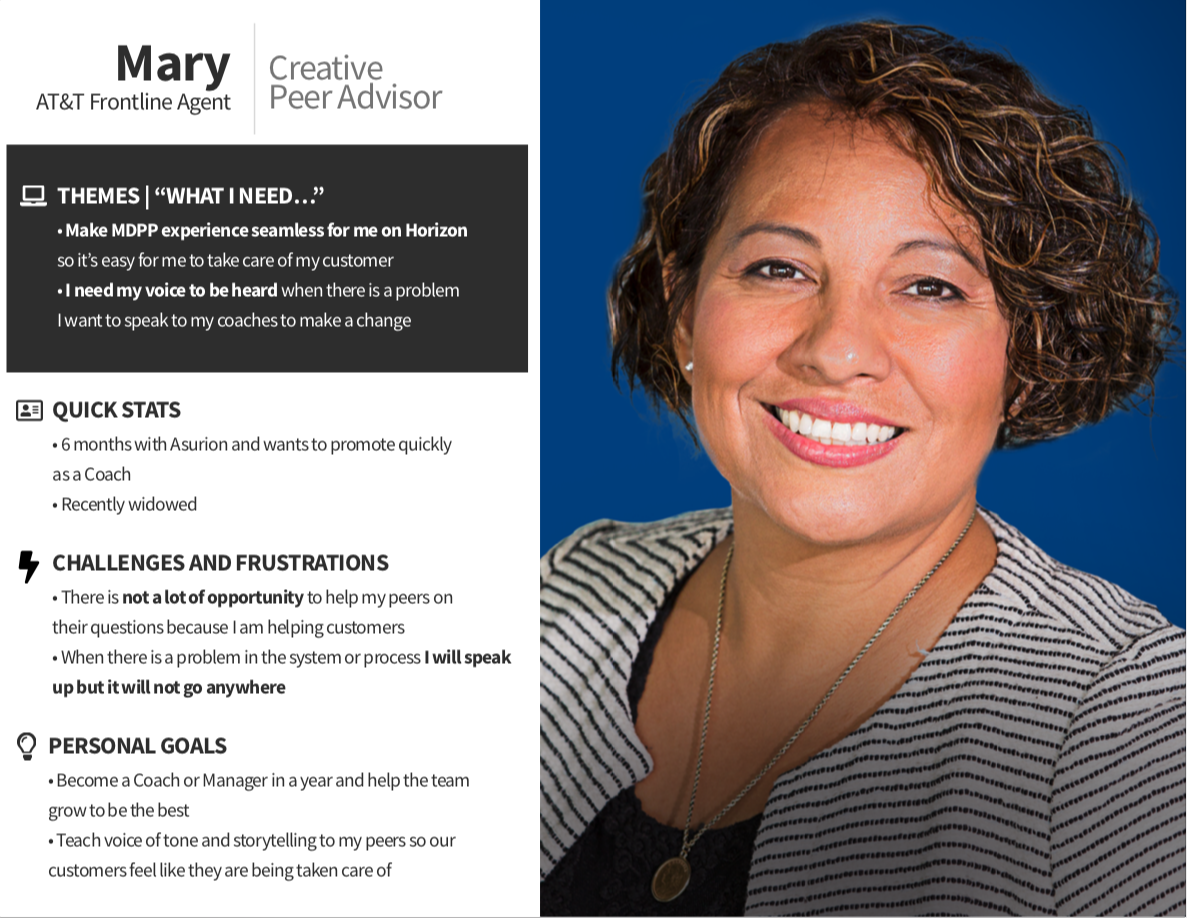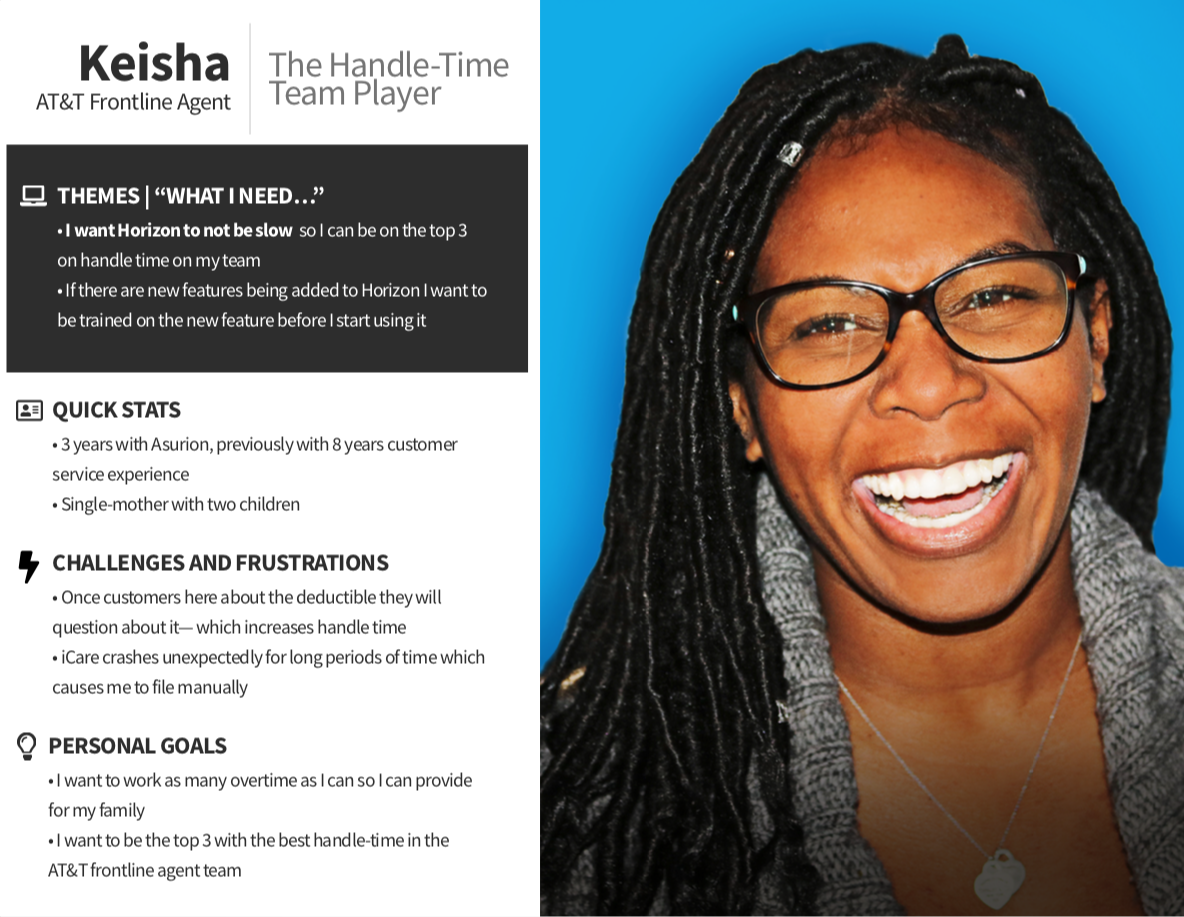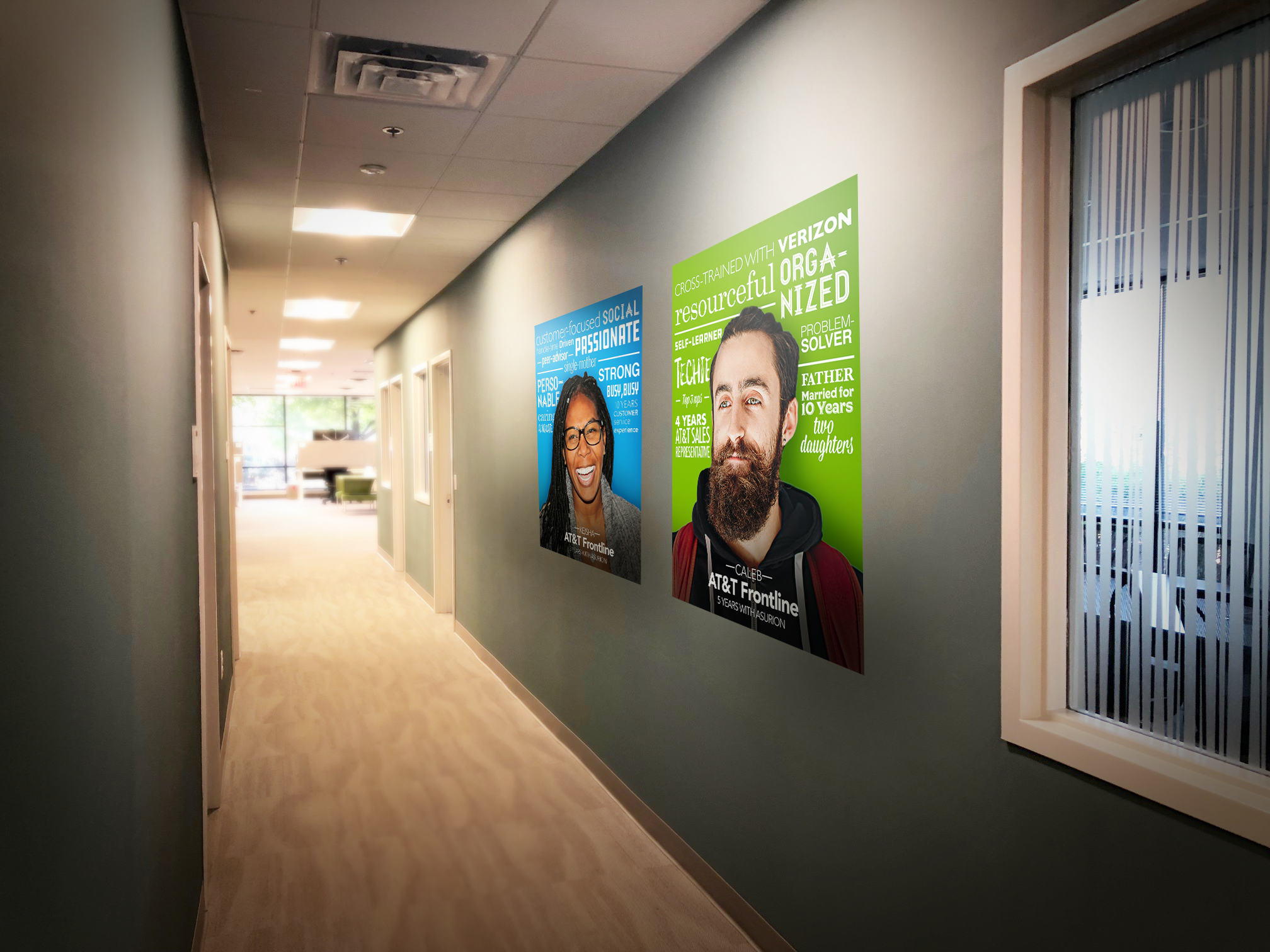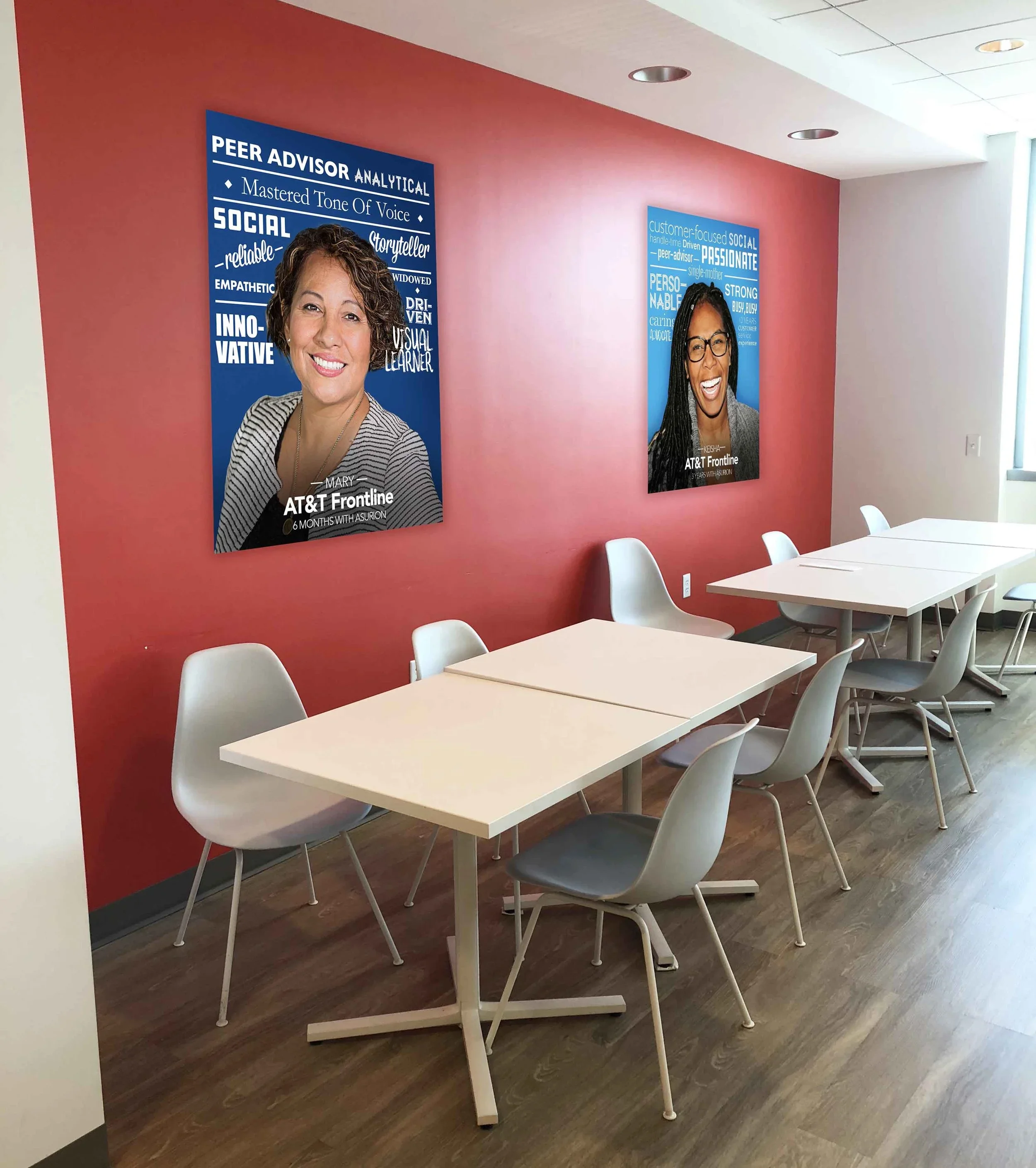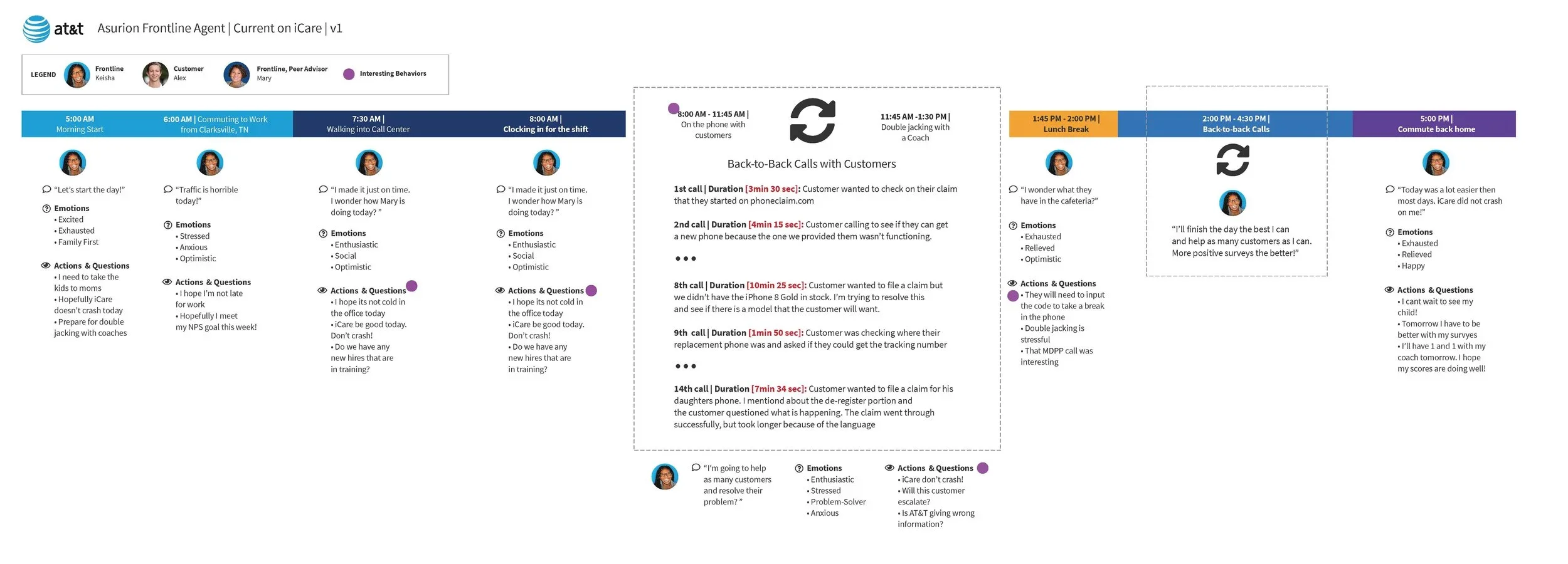AT&T - Agent User Research
Designed intuitive, efficient experiences for AT&T agents by uncovering insights through user research and transforming them into actionable design solutions.
1. Overview
Role: UX Researcher
Duration: 1 week (3 days of interviews + 2 days of usability testing)
Team: 2 UX Designers, 16 cross-functional members (Product Managers, Engineers, QA)
Users Affected: ~250 frontline agents (remote and on-site)
Business Impact:
20+ million dollar company revenue driver across two clients and additional 20+ million dollar after migrating another client.
500-700+ claims filed daily on the platform.
2 UX Designers on a cross-functional team of 16.
1 week study: 3 days of user interviews, observations and 2 days of usability testing.
2. Problem
The technology team was migrating millions of subscribers into a new claims platform.
However, no prior user research or usability validation had been conducted before launch.
Despite being late in the process, the team recognized the need for user insights to ensure a successful launch.
This was an opportunity to introduce UX research into a team primarily composed of back-end developers who had minimal exposure to user-centered design.
3. My Role
This was my first project at Asurion, where I led and executed the entire study:
Planned and coordinated the research schedule
Facilitated user interviews and usability tests
Analyzed qualitative data and synthesized insights
Created personas, journey maps, and testing reports
It was a true “oh my gosh” project — introducing research methods to a team that had never experienced user testing before.
4. Goals
Educate teams on user research value and testing practices
Enable users to understand and navigate the new platform efficiently
Reduce average handle time by 30 seconds
Allow users to identify and resolve fraudulent claims within 60 seconds
Improve navigation flow for the Account page
5. Research Approach
Methods Used
Contextual Inquiries
Ethnography
User Interviews (Frontline agents)
Usability Testing
Study Design
3 days: Interviews & Observations
2 days: Usability Testing
5 participants for usability evaluation
Collaboration
Partnered with Product Managers and engineers to observe user behavior and validate feature flows.
6. Challenges
Being the new designer in a technically-driven team
Limited awareness of UX processes
Tight deadlines with high business impact
Each feature change affected all clients simultaneously
No prior usability documentation or persona data
This became an opportunity to influence culture and show the value of design through evidence.
New feature flow
7. Discovery
What We Found
Participants were heavily dependent on legacy systems.
Frequent miscommunication occurred between frontline agents and in-store reps.
Users valued speed due to performance-based bonuses.
System lag or additional steps directly impacted their earnings.
“I care about the company and my customers. I’ll do anything to fix their problem — I just don’t want to look bad when the system is slow.”
— Participant, 5 years with Asurion
8. Usability Testing
Scenario: Simulated real call-center experiences (“happy path” scenarios)
Participants: 5 experienced agents
Key Findings
Users clearly understood the Account page
Confusion occurred in the Notes and Nickname sections
3 of 5 users felt new workflow increased handle time
“Multi-device protection” steps felt confusing and excessive
“This seems like I’m doing more steps... it feels more complicated than before.”
— Participant, 2 years with Asurion
🧾 Research Report - Read Research Report
Steps taken in the research:
Contextual inquiries
Ethnography
User interviews
Usability testing
These methods helped uncover both behavioral and emotional pain points, informing design priorities and the creation of personas used for internal workshops and solution sessions.
🧪 Testing Report - Read Testing Report
Conducted usability testing with 5 participants.
Sessions focused on core platform workflows (Account page, Notes, Nickname).
Gathered qualitative feedback on navigation clarity and perceived efficiency.
The findings validated key assumptions and revealed friction points that guided follow-up design iterations.
9. Artifacts & Deliverables
Feature-Driven Personas
Created to drive solution sessions and sprint planning
Represent real behavioral patterns from qualitative data
Socializing Personas
Printed in large format and displayed in hallways to spark curiosity and empathy
Encouraged conversations among developers and PMs about real user needs
Journey Map
Illustrated “A Day in the Life” of a frontline agent
Visualized emotional highs/lows and workflow bottlenecks
10. Outcomes
✅ 96% of frontline agents successfully completed claims on launch day
✅ Two major blocking features were disabled before rollout
✅ Leadership used research findings during sprint planning
✅ Personas were adopted by the VP of Product for future projects
✅ System Usability Score (SUS) slightly decreased by 6% — indicating real pain points were revealed and documented
11. Next Steps
Continue ongoing user research for Verizon platform launch
Socialize findings across departments and leadership
Update personas as new behavioral data emerges
Integrate feedback loops for upcoming feature releases
12. Reflection
“This project taught me that user research doesn’t need to be perfect — it just needs to be started.”
Introduced usability testing culture within a backend-heavy environment
Built empathy through data and storytelling
Mentored peers and established credibility for UX as a strategic partner
